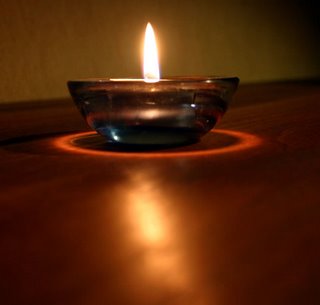 Unless we’ve got some sort of respiratory problem, most of us spend little or no time each day thinking about our breathing. It’s one of the body’s “autonomic” functions – breathing happens automatically, whether we’re thinking about it or not.
Unless we’ve got some sort of respiratory problem, most of us spend little or no time each day thinking about our breathing. It’s one of the body’s “autonomic” functions – breathing happens automatically, whether we’re thinking about it or not.On two different occasions today, my attention is focused on my own breathing. Those two circumstances are as different as different can be.
The first takes place this afternoon at Ocean Medical Center (Brick Hospital), where I’ve gone for a CT Scan. I’m halfway through my chemo treatments, so this is the mid-point check on how much my tumors have diminished in size. It will be several days before I hear the results from Dr. Lerner.
I’ve been through this procedure before. Drink a banana-flavored pseudo-milkshake: half of it three hours before the test, the rest of it moments before. Then, lie down on a narrow gurney, feet pointing in the direction of the large, white donut that is the CT Scan machine. Extend an arm, for it to be pierced with a special IV needle, so the contrast dye can be injected moments before the test. Now, hands over your head, and do what the machine tells you.

The machine? Yes, the machine. A disembodied, robotic voice repeats this three-part command a dozen or so times, as a whirring electric engine moves my body jerkily through the donut: “Breathe in. Hold it. Breathe.” For this scan of my chest and abdomen, my belly must be absolutely still at the critical moments – not rising and falling as it does with normal breathing.
Each time the robotic voice says, “Breathe in,” I fill my lungs with air – not too much, because I might hyperventilate, but a larger-than-normal breath all the same. Then I have to hold that breath a little longer than feels comfortable, before abruptly, almost explosively expelling it on the “Breathe” command. Despite all this deep breathing, there’s a breathless feeling about it all. As familiar as we all are with the act of breathing, it feels unnatural to breathe on command.
The second occasion I have to reflect on my breathing is this evening, at our church’s informal healing service. It’s a peaceful, restful setting. The sanctuary lights are dimmed, with candles flickering on the communion table. Gentle, Taizé music is playing softly over the sound system. There are periods of silence, during which the other worshipers and I sit quietly.
 In such a setting, it’s natural to become aware of one’s own breathing. It’s a time-honored meditation technique, in fact, to reflect on one’s own breathing – and perhaps to utter a simple, rote prayer on the “in” breath and another on the “out” breath. I don’t whisper any such prayer tonight, but I do focus on my breathing – and the more I do, the more relaxed I feel. By the time some of us – myself included – come forward for prayer and the laying on of hands, I’m feeling relaxed indeed, and at peace.
In such a setting, it’s natural to become aware of one’s own breathing. It’s a time-honored meditation technique, in fact, to reflect on one’s own breathing – and perhaps to utter a simple, rote prayer on the “in” breath and another on the “out” breath. I don’t whisper any such prayer tonight, but I do focus on my breathing – and the more I do, the more relaxed I feel. By the time some of us – myself included – come forward for prayer and the laying on of hands, I’m feeling relaxed indeed, and at peace.There’s quite a contrast between this day’s two experiences of intentional breathing. Each, in its own way, is supposed to make me well. Yet the first increases my anxiety, while the second makes me feel at peace. I’m not suggesting that CT Scans be conducted any differently – there are good medical reasons why it’s best to hold one’s breath while the pictures are being taken. I’m just observing an interesting contrast between the two.
This contrast seems symbolic of these two ways of healing that are meant to be complementary: the clinical and the spiritual. A truly holistic treatment, for cancer or any other disorder, must include something of both.
Breathe in... breathe out. It’s the ceaseless rhythm of life.